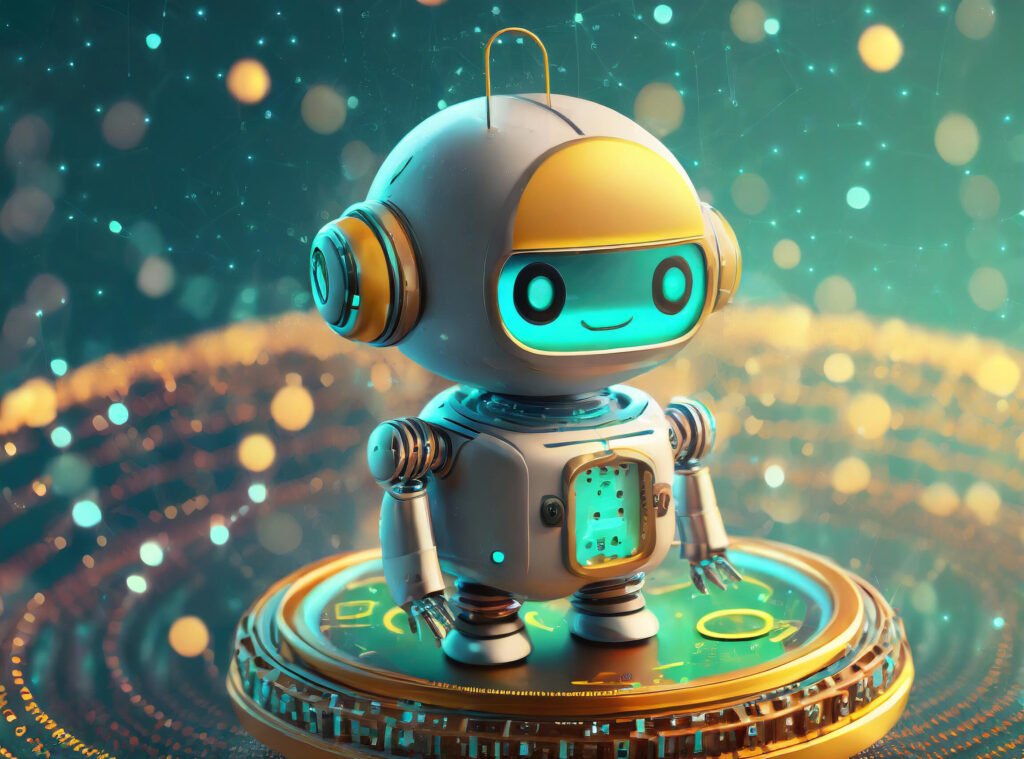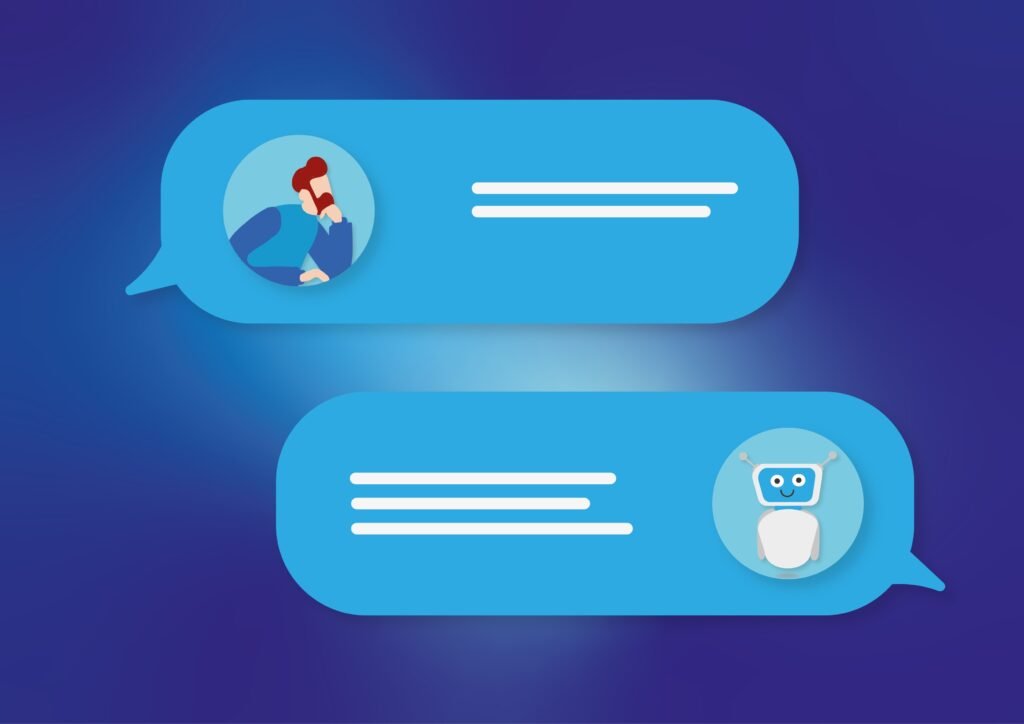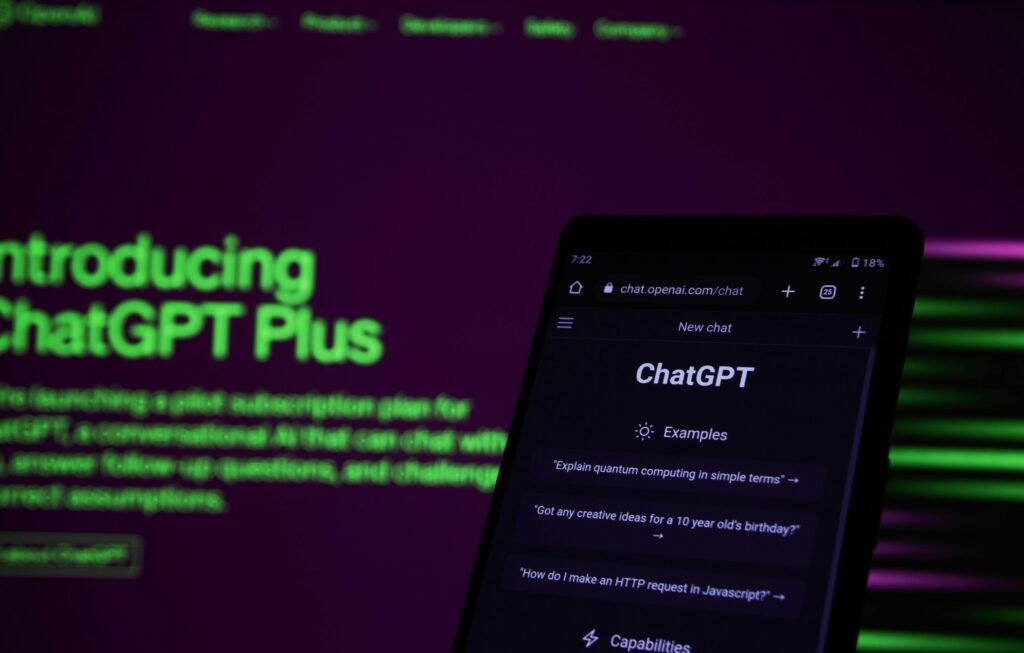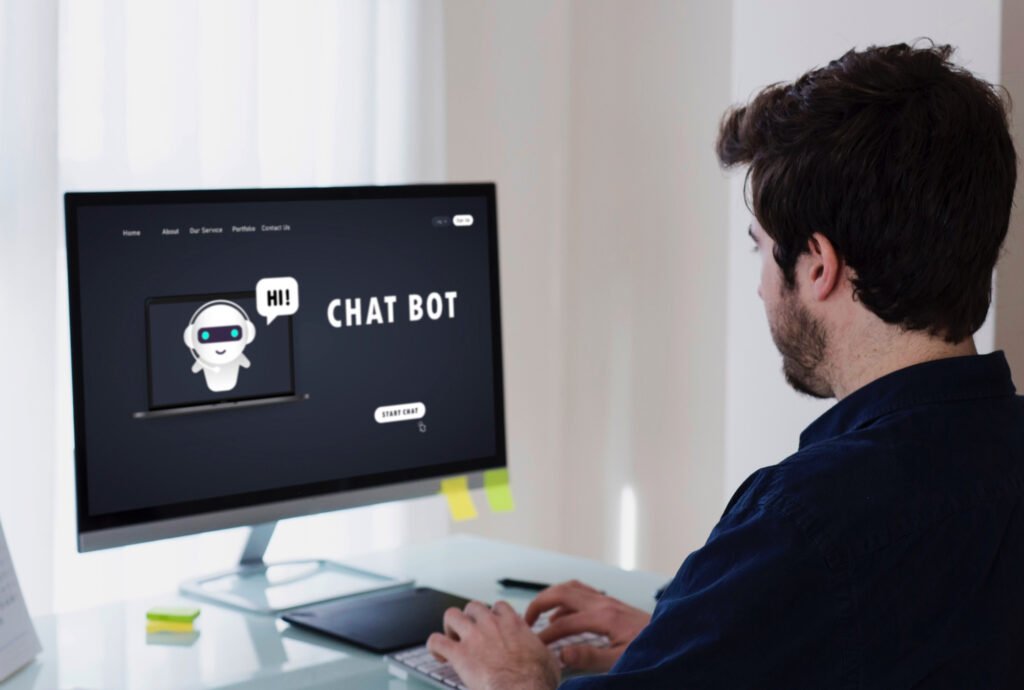Unveiling the Distinctions: Chatbot vs. AI Chatbot Explained
Table of Content
- Introduction: Noting the confusion between regular and AI-powered chatbots.
- Understanding Chatbots: Defining Chatbots and Their Functionalities
a. Answering Queries
b. Executing Tasks
c. Personalization
d. Automating Processes
e. Integration with Systems
f. Continuous Learning - AI-Enhanced Chatbots: Describing the Advanced Features of AI-Driven Chatbots
a. Exploring the Features of AI Chatbots
i. Natural Language Understanding (NLU)
ii. Contextual Awareness
iii. Personalization and User Profiling
iv. Continuous Learning and Improvement
v. Multimodal Capabilities
vi. Integration with External Systems - Closing: Summarizing key differences and offering insights
Introduction: Noting The Confusion Between Regular and AI-Powered Chatbots
Chatbots have become essential tools in today’s fast-paced digital landscape for companies looking to improve customer engagement, optimize operations, and provide individualized experiences.
But even with the increasing availability of chatbot solutions, one major area of misunderstanding still exists: the difference between standard chatbots and their AI-enabled equivalents.
According to Netomi statistics, 72% of consumers find it difficult to distinguish between chatbots that are powered by AI and those that are not, demonstrating the widespread confusion surrounding chatbots.
This ambiguity highlights how crucial it is to comprehend the subtle differences between these two categories of chatbots and their functions.
The purpose of both types of chatbots is to facilitate automated conversations, so at first glance, the differences might seem insignificant.
However, there is a deep contradiction that shapes their potential effects on consumers and businesses, as well as their functionalities and capabilities.
Conventional chatbots, also called scripted or rule-based chatbots, function according to pre-established decision trees and rules. These chatbots are designed to respond to predefined commands or keywords based on a strict set of guidelines.
Traditional chatbots are useful for answering standard questions and carrying out preset tasks, but they are not sophisticated or flexible enough to engage users in natural, contextually sensitive conversations.
Conversely, chatbots with AI capabilities are the state-of-the-art in conversational technology. They use machine learning, natural language processing, and artificial intelligence to provide conversations that are more intelligent and human-like.
AI chatbots are different from rule-based chatbots in that they can interpret language in context, figure out what the user is trying to say, and modify their responses in real-time according to the context and flow of the conversation.
It is unclear what the underlying technologies and capabilities of regular and AI-powered chatbots are, which is confusing. While there are notable differences in functionality and performance between the two, many consumers and businesses confuse them.
The distinction between traditional and AI chatbots has also become more hazy due to the swift development of conversational AI and AI technologies.
It is getting harder for businesses weighing their options to discern between various chatbot types as AI-driven capabilities become more widely available and accessible.
Because of this uncertainty, companies must comprehend the differences between standard chatbots and AI-powered chatbots. By doing this, businesses will be able to choose chatbot adoption strategies that are most appropriate for their goals, needs, and target market.
Understanding Chatbots: Defining Chatbots and Their Functionalities
Chatbots are computer programs that mimic human conversation, usually through text or voice interactions, according to Forbes.
These bots function as virtual assistants, understanding user inquiries, responding to them, and carrying out tasks on their own.
Chatbots are essential for facilitating easy and effective user interactions, whether they are used on websites, messaging apps, or mobile applications.
A chatbot is essentially a computer program that mimics human communication, usually via text or voice interactions.
Whether deployed on websites, messaging platforms, or mobile applications, chatbots play a pivotal role in delivering seamless and efficient interactions with users.
Depending on their complexity, design, and underlying technologies, chatbots can have a wide range of functionalities.
But generally speaking, they cover a variety of functions meant to improve user experiences and boost operational effectiveness.
Let us examine some typical features of chatbots:
Answering Queries
Responding to user queries and offering guidance or support is one of the chatbots’ main purposes.
Chatbots are excellent at providing prompt and precise answers to frequently asked questions, whether they are about obtaining product details, offering customer service, or guiding users through a procedure.
Executing Tasks
In addition to offering information, chatbots can carry out several tasks for users. Chatbots automate repetitive tasks, saving users time and effort.
These tasks range from making reservations and appointment scheduling to processing orders and processing payments.
Personalization
Advanced chatbots provide individualized experiences by utilizing user profiling and data analytics.
Chatbots can provide personalized recommendations and responses to each user based on their past interactions, behavior patterns, and preferences.
This increases user satisfaction and engagement.
Automating Processes
Chatbots are essential for automating workflows and repetitive tasks in the field of business operations.
Chatbots aid companies in streamlining procedures, increasing productivity, and cutting expenses associated with running their business, whether they are handling transactions, routing internal requests, or classifying customer inquiries.
Integration with Systems
To facilitate data exchange and interoperability, chatbots can be easily integrated with current apps and systems.
Chatbots function as intelligent interfaces, bridging the gap between users and technology, whether they are accessing customer databases, obtaining real-time information, or initiating actions in external systems.
Continuous Learning
With the use of machine learning and artificial intelligence, sophisticated chatbots can grow and learn over time.
Through interaction analysis, feedback collection, and context adaptation, these chatbots improve their ability to interpret user intent and provide pertinent responses.
All things considered, chatbots are a flexible and scalable answer for companies looking to improve client interaction, expedite workflows, and spur digital transformation.
Organizations can use chatbots to enhance customer experiences, boost operational effectiveness, and maintain a competitive edge in the current market by being aware of their features and capabilities.
AI-Enhanced Chatbots: Describing the Advanced Features of AI-Driven Chatbots
Conversational AI, also known as AI-driven chatbots, is the next step up in chatbot development.
AI chatbots are capable of interpreting and comprehending natural language, which sets them apart from rule-based chatbots and allows them to have more dynamic and contextually relevant conversations.
AI chatbots are powered by machine learning and artificial intelligence, and they constantly analyze enormous volumes of data to optimize their operations and improve user experiences.
These sophisticated chatbots can interpret user intent, glean insightful information from discussions, and deliver customized responses based on user preferences.
Slang, colloquialisms, and statements that are unclear in context can all be understood by AI chatbots by utilizing natural language processing (NLP) capabilities.
This makes it possible for them to engage users in more meaningful and satisfying ways by delivering more human-like interactions.
Exploring the Features of AI Chatbots
Artificial intelligence chatbots are capable of much more than just answering simple questions. AI-enhanced chatbots stand out as the epitome of innovation and sophistication.
These chatbots are different from their traditional counterparts because of their advanced features, which are powered by artificial intelligence (AI), machine learning (ML), and natural language processing (NLP) algorithms.
Key characteristics that set AI-driven chatbots apart are as follows:
Natural Language Understanding (NLU)
Chatbots enhanced by artificial intelligence (AI) can understand natural language better than traditional chatbots, which only use keyword matching and predefined rules.
NLU, according to Master of Code, gives chatbots the capacity to understand user intent, extract important data, and intelligently reply to inquiries, improving the conversational experience as a whole.
Contextual Awareness
Chatbots powered by AI are excellent at comprehending and preserving context during exchanges.
Through the analysis of prior interactions and the retention of contextual cues, these chatbots can deliver more thoughtful and customized responses.
AI chatbots make sure the user experience is smooth and fluid by remembering user preferences, recalling previous questions, and adjusting to changing conversation topics.
Personalization and User Profiling
Chatbots can generate comprehensive user profiles and provide individualized experiences by utilizing AI and machine learning algorithms.
AI chatbots can customize responses and recommendations to specific users, increasing engagement and satisfaction, by examining user behavior, preferences, and previous interactions.
AI chatbots aim to satisfy every user’s specific needs and preferences, whether that be through personalized assistance, product recommendations, or the provision of pertinent content.
Continuous Learning and Improvement
AI-driven chatbots are dynamic, ever-learning systems that get better with time.
These chatbots evaluate user interactions, collect feedback, and modify their responses in real time using machine learning algorithms.
Through the process of learning from previous interactions and user feedback, artificial intelligence (AI) chatbots enhance their ability to comprehend user intent, resolve issues, and provide precise responses.
Multimodal Capabilities
Sophisticated AI chatbots are capable of text, voice, and rich media interactions with users.
Whether they are processing voice commands, responding to text inputs, or displaying visual content, these chatbots offer a seamless and entertaining user experience across a range of communication channels.
AI chatbots ensure inclusivity and accessibility by supporting multimodal interactions, which accommodate a range of user preferences and accessibility requirements.
Integration with External Systems
AI chatbots can easily interface with external databases and systems, giving them access to real-time data and the ability to initiate actions in external applications.
AI chatbots act as intelligent interfaces between users and backend systems, facilitating the retrieval of product details from inventory systems, the access of customer data from CRM platforms, and the inception of transactions through payment gateways.
AI chatbots offer a potent solution beyond basic automation, offering intelligent and personalized interactions that resonate with users for businesses looking to improve their customer service capabilities and boost operational efficiency.
The ultimate in conversational technology are AI-enhanced chatbots, which use cutting-edge AI, NLP, and ML algorithms to provide insightful, tailored, and contextually relevant interactions.
Through the utilization of AI-powered chatbots, companies can improve customer experiences, optimize workflows, and propel digital transformation in a market that is becoming more and more competitive.
Closing: Summarizing key differences and offering insights
In conclusion, there are important differences between chatbots and AI chatbots even though both are useful tools for improving customer interactions and streamlining business processes.
While AI chatbots use cutting-edge technologies like artificial intelligence and natural language processing to deliver more dynamic and contextually relevant interactions, conventional chatbots work within predefined parameters and respond to user queries based on rules.
As businesses continue to prioritize customer engagement and seek innovative solutions to meet evolving consumer demands, the adoption of AI chatbots represents a strategic investment in enhancing user experiences and driving competitive advantage.
Employing conversational AI to its full potential can help organizations succeed in an increasingly digital world by creating new avenues for growth and differentiation.
In conclusion, it is impossible to overestimate the impact of chatbots in changing the digital landscape as long as consumer expectations and technology development continue.
Businesses can set themselves up for long-term growth, innovation, and success in the digital era by comprehending the subtle differences between various chatbot types and embracing the potential of AI-driven solutions.
Want to integrate chatbots into your system? Let’s discuss, click here.
2 Comments
Leave a Reply Cancel reply
Recent Posts
Have Any Question?
We’ve got answers! Feel free to reach out with any inquiries you may have.





AI technology is transforming industries all over the world, and now it’s creating financial freedom for ordinary people!
I just wanted to take a moment to say how much I appreciate your blog posts. They’re always well-written, informative, and keep me coming back for more. Keep up the great work!